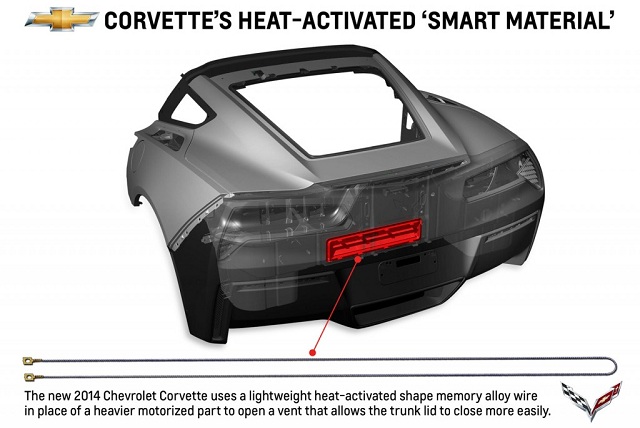When it comes to designing and building a supercar for the 21st century, sometimes you need to come up with a truly cutting-edge design. These days, performance cars like the 2014 Corvette Stingray [1] are especially susceptible to weight gain, and engineers have their hands full trying to keep these cars capable, yet light.
 [2]For GM [3], the introduction of the C7 was an opportunity to test out some of their latest technology; heat-activated spring actuators [4] that replaced heavier, bulkier motors. This video starring GM’s Paul Alexander explains how these heat-activated springs work, and why they are saving weight on cars like the Corvette.
[2]For GM [3], the introduction of the C7 was an opportunity to test out some of their latest technology; heat-activated spring actuators [4] that replaced heavier, bulkier motors. This video starring GM’s Paul Alexander explains how these heat-activated springs work, and why they are saving weight on cars like the Corvette.
The lightweight alloy spring smart material memorizes and retains its shape, so that when exposed to heat, a stretched-out spring will return to its natural state. This lightweight solution is far simpler than the actuator motors popular in many cars for a task as simple as opening a vent or hatch.
On the Corvette, this smart wire material is used on the hatch vent. When the rear hatch is opened, an electrical current goes through the wire, warming it up and shrinking it. When the hatch closes, the electrical current stops, the wire cools, and eventually stretches back out, closing the vent once again.
While this technology may only shed a few ounces off of the new Corvette, every little bit matters these days, and this new technology may soon be a lot more pervasive across other Chevy models. Who knows? Maybe one day they’ll replace tiny actuator motors entirely! Ok, maybe that statement didn’t require an exclamation point… but it’s pretty impressive how such a simple idea can make a big difference in future cars, don’t you think?